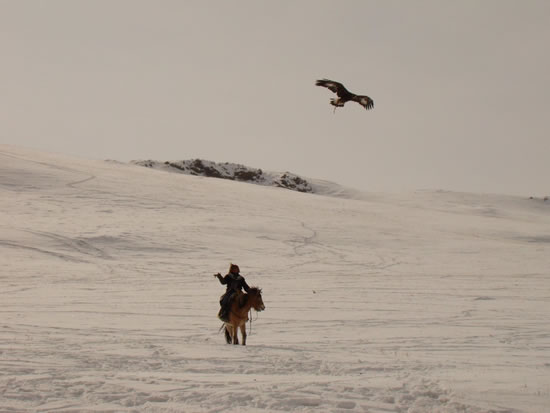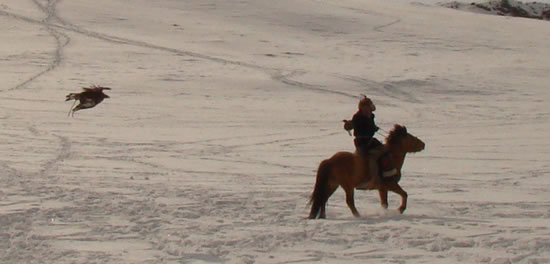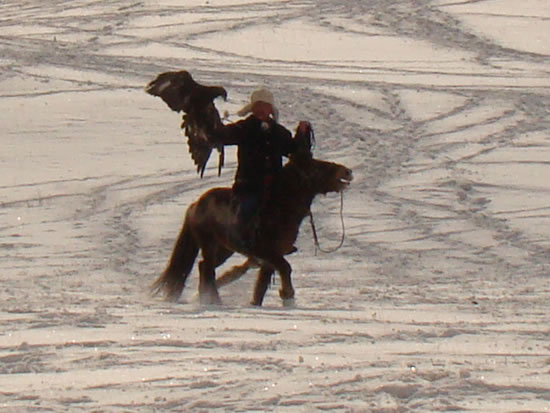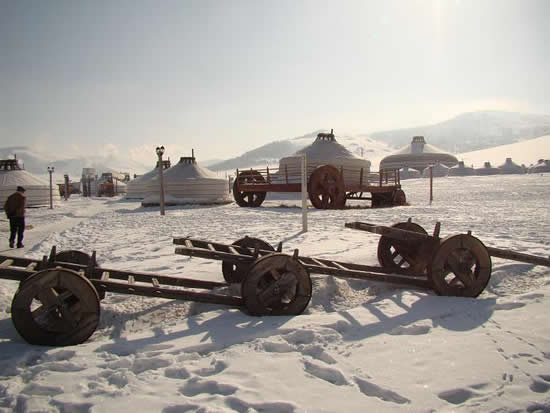
Mongolia has always had a sizable ethnic Kazak population – after all it shares a long western border with the country. This meeting of nations brings Islam to Mongolia, which is why in the far west in places such as Bayan Olgi you’ll find Mosques. The Kazaks have different traditions too – even their Gers (Yurt in Kazak) have slightly different appearance. Nomads like the Mongolians, they do however favor the use of eagles in hunting, and an annual eagle festival is held each autumn in Bayan Olgi. Today though I am in Ulaan Baatar, looking after my property development, and on March 22nd the Kazaks celebrate Nowruz – the first day of spring.
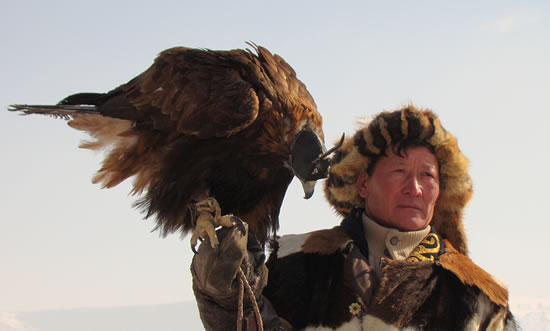
This far north in Central Asia snow still lies on the ground and it is a balmy -25, but the sun is warming, and the slightest perception of melt water can be seen in the run offs from the snow fields. To celebrate Nowruz however the Kazaks here have organized an eagle festival on the mountains above UB, with competitions involving the calling of the bird to the hand while on the horse. About twenty riders are taking part, and in clear blue skies these freezing temperatures seem benign. It is also spectacular.
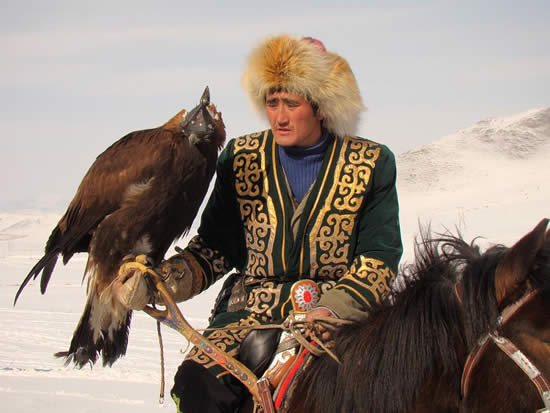
The birds are immature Golden Eagles, taken from the nest as chicks and then raised as part of the Kazak nomad family. Taught how to hunt, and to fly to wrist while at a fast trot, these birds are typically starved for a day or two prior to hunting, and are hooded while on the wrist. When prey is spotted – typically arctic hare or small game birds, the eagle is unhooded and let loose. Soaring into the air, it spies its prey (the horseman pointing ahead towards it), and silently approaches. Eagles feathers are specifically adapted to be totally silent – and the target animal may not even be aware it has been spotted until it is too late. The eagle, talons outstretched, grabs the prey and spreads its wings around it in a circular cape of death. There is little chance of escape. The birds talons can shred a mans unprotected arm to the bone – imagine the damage these can inflict upon a hare. The rider then arrives, dispatches the unfortunate animal if it is still alive, retrieves the eagle and gives him a tidbit. The kill is then slung over the horse saddle to later end up in the pot, and the process begins again.
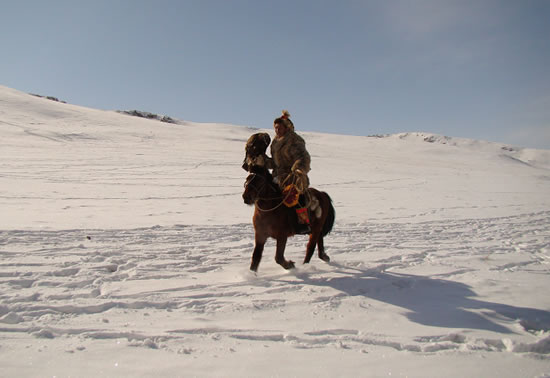
During the competition, the birds are released from half way up the mountain, and are called to the wrist by their owners, on horseback riding several hundred meters below. The bird is supposed to be obedient and fly directly to wrist, but some soar off into the blue and enjoy a few minutes of freedom. Competitors are also judged on their horses grooming and overall handling of the eagle while it is on the wrist at a gallop. It’s not easy, and some riders have to gallop quite some way to retrieve errant birds. The eagles themselves are used as hunting partners in this way until they reach three years of age, when they are returned to the wild to raise their own offspring. Central Asia still retains many ancient and charismatic customs, to be amongst the Kazaks and their eagles to celebrate the first day of spring in the Mongolian mountains is one of life’s great pleasures.
